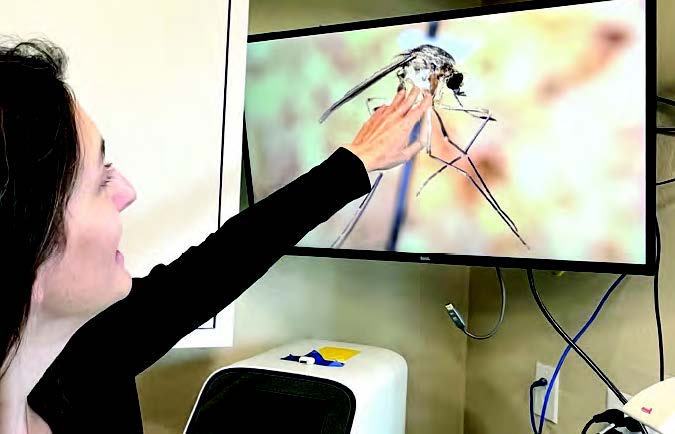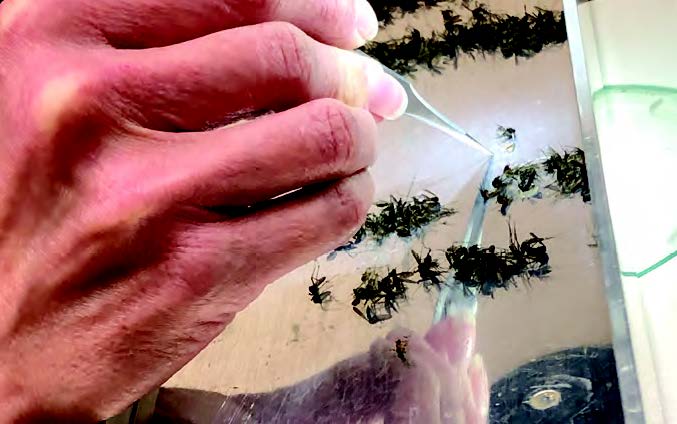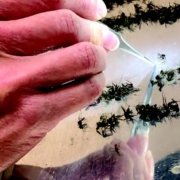What does a newly identified mosquito mean for Collier County?

By Patrick Linn, MS, MSHAPI
Executive Director, Collier Mosquito Control District
A mosquito species from South America and the Caribbean is now calling Collier County home. The Culex lactator was found in our traps and identified in 2022. Since then, we’re seeing them in numbers that indicate they have become well-established in our area.
Should we be alarmed by its presence? The scientific community isn’t sure about this mosquito because not much research is available. In fact, it’s unknown whether it even seeks blood meals from humans. The Culex lactator mosquitoes discovered in the Miami area in 2018 were found to have birds’ blood in their systems.
Are we taking any action to control this “new-to-us” mosquito? No, not specifically. As with other mosquito species that are known to spread disease, Collier Mosquito Control District scientists are monitoring Culex lactator to determine its habitat and prevalence until conclusive research is available.
What we do know is that it’s a member of the Culex family of mosquitoes, which has more than 750 species worldwide. In Collier County, the Culex quinquefasciatus and Culex nigripalpus are present, closely monitored, and tested in our laboratory for the presence of West Nile virus and St. Louis encephalitis, which those species can carry. In 2020 and 2021, a few Collier residents contracted West Nile virus from these mosquitoes.
The awareness of this mosquito’s presence in our area is important because southwest Florida’s subtropical environment provides a viable habitat for Culex lactator and other invasive mosquitoes to become well-established. The world is a much smaller place thanks to factors such as global tourism and international commerce, which have most likely led to other species making their way to Collier County. Our ecology, the availability of blood meals, and abundantly warm temperatures help mosquitoes thrive here.
 A few years ago, district scientists identified Aedes scapularis in some of our local traps. This species typically calls the Caribbean home. While we can only surmise how it arrived here, it is now thriving in south Florida. This mosquito can carry dog heartworm, yellow fever, lymphatic filariasis, and Venezuelan Equine Encephalitis. Discovery of various species of mosquitoes in locations outside of their typically known habitats – such as the Aedes scapularis and Culex lactator – demonstrates the dynamic nature of the planet’s ecology. Of the more than 50 species already identified in Collier County, there are less than 10 which are capable of spreading disease. Thus, we monitor and engage in control efforts of those genera and species associated with human and animal disease.
A few years ago, district scientists identified Aedes scapularis in some of our local traps. This species typically calls the Caribbean home. While we can only surmise how it arrived here, it is now thriving in south Florida. This mosquito can carry dog heartworm, yellow fever, lymphatic filariasis, and Venezuelan Equine Encephalitis. Discovery of various species of mosquitoes in locations outside of their typically known habitats – such as the Aedes scapularis and Culex lactator – demonstrates the dynamic nature of the planet’s ecology. Of the more than 50 species already identified in Collier County, there are less than 10 which are capable of spreading disease. Thus, we monitor and engage in control efforts of those genera and species associated with human and animal disease.
Given the continued discoveries of genera and species historically endemic to other locales, there exists a high probability that other invasive mosquito species will establish populations in southwest Florida. They could bring diseases that historically haven’t been of concern in our state. Additionally, depending upon the type of blood meal they seek, they could provide an increased risk of new diseases in both animals and humans.
 In conclusion, while the identification of Culex lactator doesn’t cause alarm for Florida’s mosquito control agencies, it most certainly merits vigilance in monitoring its populations, potential for disease transmission, and need for control. Already at the heart of our mission of protecting public health and comfort, the Collier Mosquito Control District is working hard to stay ahead of any potential threat. Our focus on protecting the health and well-being of residents and visitors directly, positively impacts Florida’s economy and quality of life.
In conclusion, while the identification of Culex lactator doesn’t cause alarm for Florida’s mosquito control agencies, it most certainly merits vigilance in monitoring its populations, potential for disease transmission, and need for control. Already at the heart of our mission of protecting public health and comfort, the Collier Mosquito Control District is working hard to stay ahead of any potential threat. Our focus on protecting the health and well-being of residents and visitors directly, positively impacts Florida’s economy and quality of life.
Want to know more about the science behind mosquito control? Looking for someone to speak at your group’s next meeting? Visit our website at cmcd.org or call 239.436.1000




Leave a Reply
Want to join the discussion?Feel free to contribute!